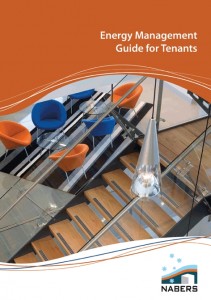 NABERS (the National Australian Building Energy Rating System) has announced the launch of their comprehensive new guide to help tenants take control of the office energy use on November 2012. The NABERS energy management guide for tenants provides practical advice to tenants on the key steps involved in starting their energy efficiency journey. The guide, also gives recommendations on where to go for professional advice and assistance.
NABERS (the National Australian Building Energy Rating System) has announced the launch of their comprehensive new guide to help tenants take control of the office energy use on November 2012. The NABERS energy management guide for tenants provides practical advice to tenants on the key steps involved in starting their energy efficiency journey. The guide, also gives recommendations on where to go for professional advice and assistance.
Launch of the NABERS Energy management guide for tenants
8 November, 2012: Environment Minister Robyn Parker today released the NABERS Energy Management Guide for Tenants which is designed to help office tenants take control of their energy costs and environmental impacts.
Ms Parker said the Guide will assist tenants in office buildings to manage their energy use efficiently while still having the light, warmth, cooling and power needed to support their business’s operations.
“The NABERS Energy Management Guide for Tenants has been designed to give tenants control of their own energy,” Ms Parker said.
“Given that office tenants are responsible for, and can control, around 50 per cent of the energy use in their buildings there are large potential savings to be made.
“Office tenants are a diverse group; there are large and small offices, new fit outs and established tenancies.
“The Guide provides advice for tenants for each situation, including practical advice on steps any tenant can take themselves to save energy, as well as directions on where to go for professional advice and assistance.”
The Guide will complement the NSW Office of Environment and Heritage’s recently released Energy Efficient Lighting Technology Report which is designed to help businesses choose the right lighting upgrade through outlining the technical specifications and business case for various lighting options.
Ms Parker said the guide would be a very helpful tool for tenants managing their energy bill, as powering lights accounts for 15 to 25 per cent of the electricity bill for NSW businesses.
“There are many reasons for using energy more efficiently, whether it’s a business requirement to meet environmental reporting criteria, or staff wanting to see the premises run more sustainably.
“Or it might be as simple as wanting to reduce medium to long-term costs. The often missing ingredient is knowledge about where to start and how to arganise efforts – the
Guide fills this gap.”
As well as practical advice, the Guide also provides several real-life examples of office tenants who have achieved great savings through simple initiatives:
- Colliers achieved a 4 star NABERS Energy rating through management commitment and encouraging staff to change their behaviour. The high NABERS Energy rating was achieved without the use of contemporary lighting technologies.
- EP&T used smart metering to reduce energy consumption. In one incident, site managers were able to identify and disable an override on the air conditioning system, saving $6,286 a year from one simple action.
- A Canberra tenant used lease negotiations to obtain energy efficiency improvements from the building owner, such as improvements in base building services and lighting initiatives. The Royal Institution of Chartered Surveyors (RICS) installed high tech energy efficient lighting, increasing upfront costs but leading to greater energy savings.
- RICS achieved a 5 star NABERS Energy tenancy rating 15 months after the installation was completed. Energy consumption was reduced by 44%.
Download the NABERS energy management guide for tenants here (2 meg).
NABERS has many other resources to help organisations manage energy, waste and water issues.
